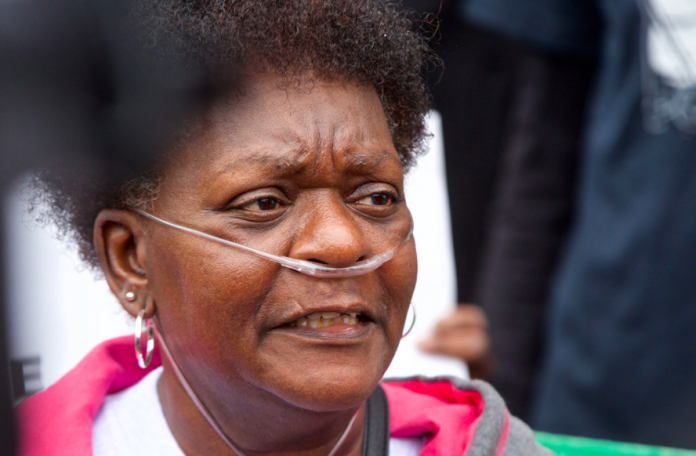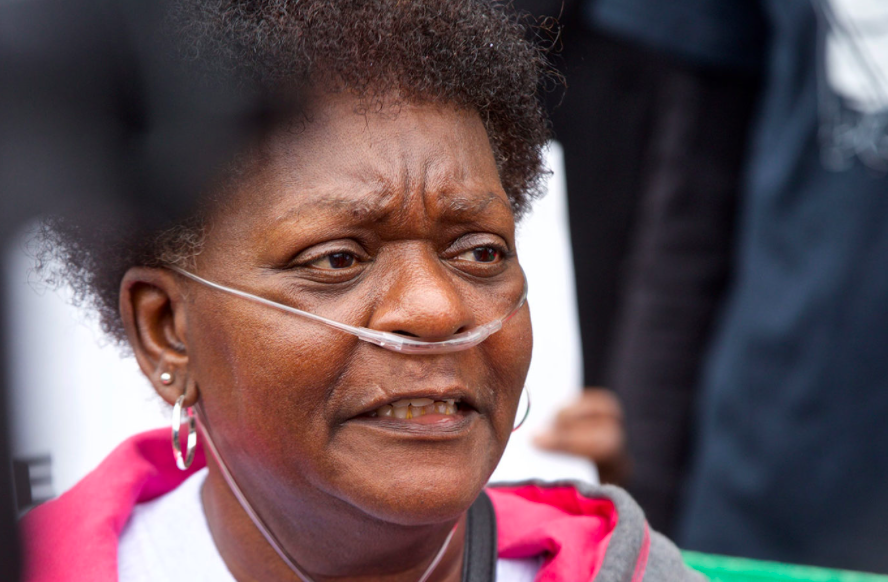
The India Basin environmental impact report, which was more-or-less rejected by the supes two weeks ago when the local air board said the construction proposals would cause too much airborne pollution, comes back to the board Tuesday/16.
Greenaction, a Bayview Hunters Point environmental justice group, appealed the EIR on the project, which involves the construction of 1,500 new housing units on the edge of the Hunter Point Shipyard, where we now know there is still at least some radioactive contamination. At the hearing two weeks ago, Greenaction representative Marie Harrison, who was carrying an oxygen tank because of her respiratory problems, said that the development would cause further damage in an area that already has the highest asthma rates in the city.

A representative of the Bay Area Air Quality Management District said that the construction would cause unacceptable levels of pollution and that the plan needed changes.
The air-pollution issues are nothing new: The EIR acknowledges that there are air-quality problems that can’t be mitigated. But the Planning Commission decided that the city’s need for housing is so great that it overrides those concerns.
So now the issue is back before the board, which only very rarely overturns EIRs. Sup. Malia Cohen, who represents the district, supports the project. But as Tony Kelly, candidate for D10 supe, told me,
I’ve been around a while, but it’s still a shock that, in San Francisco in 2018, the city might approve a building project next to the Shipyard that hasn’t really considered how safe the dirt is, has environmental impacts that can’t be mitigated, and deliberately avoided communities that don’t speak or read English. And the official reason the city might approve the project anyway is, they want the money and the expensive housing. If this gets approved, how wrong does a project have to be to get rejected?
Shamman Walton, who is also a leading candidate in D10, told me he doesn’t have enough information to take a position on the project EIR.
And then the supes will have to deal with the Central Soma Plan, which pretty much everyone agrees is a mess– too much office, too little housing, no concern for massive new traffic problems. The board approved the EIR September 25 despite all those issues, and Sup. Jane Kim, who represents the district, said she wants to add a lot more housing to the mix.
I asked Kim why the city needed to make room for that much more office space in the first place, why this level of growth is a good thing for anyone. “I get that argument,” she said.
But that argument – that the city can’t possible handle the impacts of this rapid office and job growth – is generally dismissed by planners, and frankly, by most of the supes.
So the plan itself comes before the Land Use and Transportation Committee Monday/15 and the full board the next day.
Two weeks later, Land Use and Transportation will hold a hearing called by Sup. Sandra Lee Fewer to talk about the idea that private buses should be able to use the city’s Muni-only lanes. If the Muni-only lanes are meant to speed up the city’s transit system, clogging them with Google buses would seem counterproductive – but that’s what the MTA is considering at this point. Transit and environmental advocates are urging people to contact their supes in advance of the hearing and express opposition to the plan.
Sup. Hillary Ronen has introduced legislation that might make some impact on the dramatic gentrification of the Valencia Street corridor and surrounding areas and the displacement of long-time neighborhood businesses by high-end restaurants and brewpubs.
The measure would require conditional-review permits for new restaurants and would ban new brewpubs in the area roughly bounded by 14thStreet, Guerrero, Cezar Chavez, and Potrero.
Ronen also wants to block the merger of ground-floor commercial spaces resulting in spaces larger than 1,500 feet (except for legacy business, arts, and community uses). And she would require than any new developments of more than 10,000 square feet provide storefront space of less than 1,500 square feet.
Light industrial use would be legal in most areas, and a conditional-use hearing would be required if any legacy business is replaced.
This is just a start; there’s a lot to be done to save what’s left of the Mission. But it’s a step forward, and the Planning Commission will hear it Thursday/18.


